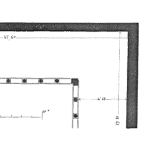
Another conspiracy theory debunked. Your business has various insurance coverages including business continuity. You pay quite a hefty premium for that coverage so you believe you are covered. But are you really?
Insurance will cover you for unforeseen risks provided you are doing what the insurer deems to be the minimum to minimize those risks. Your car insurance provides coverage for damage to your car in an accident. But what about an accident that you caused by irresponsible drinking and driving? Probably not – the loss in on you (in a number of ways). Warranties are a form of insurance. They will cover your losses (usually very limited) in the event of new equipment breaking down, provided you have followed the prescribed maintenance program. If you don’t follow the program, you are not covered.
Is your business really covered if your physical assets fail to perform? Will business continuity coverage payout if you suffer a failure that can be traced back to a lack of maintenance, or not doing the correct maintenance? Insurers are loath to pay if the insured wasn’t taking the appropriate measures to reduce the risks. The insurer sees it as their risk, not yours, but you are on the hook to reduce it and mitigate damages in the event of foreseeable events. Equipment failure is a foreseeable event, therefore maintenance is a must.
What maintenance? Manufacturer recommendations are a “must follow” for warranty claims to be honored unless you can show the supplier of your equipment that your proposed maintenance program is superior. Manufacturer recommendations are far too generalized to be applicable in all operating circumstances and they are often technically flawed.
If you use Reliability Centered Maintenance (RCM), then you will have a superior program, but you must get the supplier or insurer (warranty issuer) to agree. I’ve done that with programs generating using RCM with great success. Not only did the tailored program get their approval, it earned them lowered insurance premiums, lowered their maintenance costs, and extended major maintenance intervals so they enjoyed more productive uptime without losing coverage.
Developing a maintenance program using RCM comes at a cost. In our experience, that cost is roughly 2 – 3% of the capital (or replacement) cost of the asset. It is roughly the same as the amount a manufacturer builds into the pricing of their products when you buy them. If you have such a program you probably don’t need the warranty (you won’t be following their recommended maintenance) so it will be useless to you, and that gives you a negotiating point on the up-front cost. You’ll be putting that 2-3% to good use to develop a maintenance program that will provide benefits far in excess of those provided if you ever need to make a warranty claim.
You may still be skeptical of this, so consider that insurance is all about payments, risks and payoffs when something goes wrong. You make a bet (pay a premium) to cover a risk. If the worst happens, you hope to be paid for your losses (the payoff). The insurer will do what they can do wiggle out of it, so you’ll have a bit of a battle on your hands. Let’s say you win and get the payoff. Was the bet worth it? What else have you lost? The insurance might cover your repairs or asset replacement, but what about the consequences that come with the inability to use it? Your production losses that occur when the asset failed and possibly continued until it was replaced or repaired are likely not covered. Even if they are, your reputation in the market for being a reliable supplier will suffer.
Insurance is a gamble against yourself. The only time you win is when you lose.
So why play that game? It’s stacked in favor of the insurer, not the insured. Ditto for warranties. Put that money you’d have spent on warranty into a bet on yourself. Use RCM and develop a highly appropriate and tailored maintenance program that will deliver more than any warranty ever could.
Leave a Reply